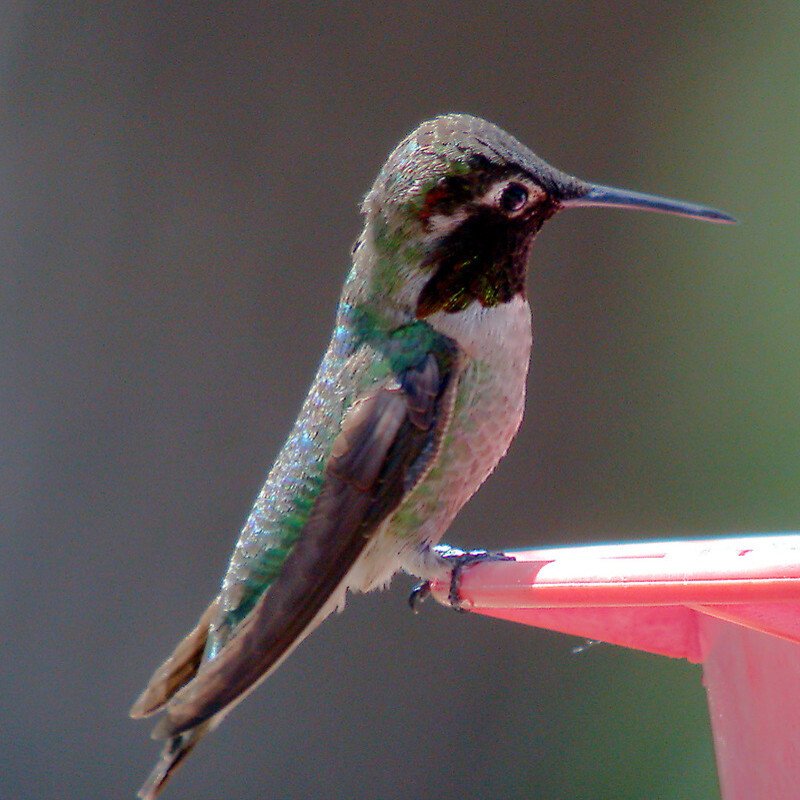Known as Archilochus alexandri, the black-chinned hummingbird lives in a variety of habitats around the world. A migratory bird, this bird ranges south as far as Mexico during the winter months.
Quick Overview: Archilochus Alexandri – Black-Chinned Hummingbird
Body size: Around 3.5-4 in (9-10 cm) and a weight of 3 g (0.1 oz)
Main colors: Black, Purple, Gray-White, Bronze-green, Green
Range: Coastal West of United States
Migratory Bird: Yes
Best time of the year to see in the U.S.: January, February, June, July, August, September, December
Conservation Status: Least Concern
Black-chinned hummingbird Description
Adult sexes vary. Males of this species have black faces and chins with metallic purple throats. Gray-white bellies and bronze-green fawn flanks. These thin retrices are part of the tail feathers. Green retrices with a black tip.

Size
These birds have a length of 3.5-4 in (9-10 cm) and a weight of 3 g (0.1 oz). Their wings could range from 4-5 in (10-13cm).
Feeding
Capillary motion allows black-chinned hummingbirds to obtain nectar and small bugs from flowers or sugar water from feeders without perching. They feed on Anisacanthus, Delphinium, Cirsium, Russelia, Malvaviscus arboreus, and tree tobacco. They eat flies, ants, and spiders for protein. During migration, black-chinned hummingbirds graze on tiny insects in valleys and grasslands. If they travel to cities, they may be fed by humans.
Habitat
Black-chinned hummingbirds live in riparian areas, which lie between dry ground and water. They range from sea level to 2,500m. Cedar or tamaris Tamarix ramoissima is a non-native plant where black-chinned hummingbirds nest. Acorn sycamore Platanus occidentalis, cottonwood Populus deltoides, and sugarberry Celtis laevigata trees also have their nests.
Behavior
At feeding time, black-chinned hummingbirds hover often. When hovering they always flip and extend their tail. Solitary black-chinned hummingbird During the mating season, both males and females defend food sources. Competition for 15-30 m-diameter breeding areas is fierce. Males seldom protect flowers when females are absent. Taking little amounts from undefended sources or male territory. Hummingbirds drive away intruders.
Archilochus alexandri Scientific Classification
- Kingdom: Animalia
- Phylum: Chordata
- Subphylum: Chelicerata
- Class: Aves
- Order: Apodiformes
- Family: Trochilidae
- Genus: Archilochus
- Species: Archilochus alexandri
Best time of the year to see
The best time to see these birds in the United States is during summer (June to September).
Distribution of the Black-chinned hummingbird in the USA
Black-chinned hummingbirds breed in southern British Columbia. Their distribution extends south to the United State west. Utah, Colorado, New Mexico, and West Texas are included. To the west, it reaches eastern California, middle Oregon, central Washington, Idaho, and Nevada. The non-breeding range extends from Navojoa, Sonora, to Zihuatenejo, Guerrero. Black-chinned hummingbirds are increasingly seen in wintering regions near the Gulf of Mexico.

